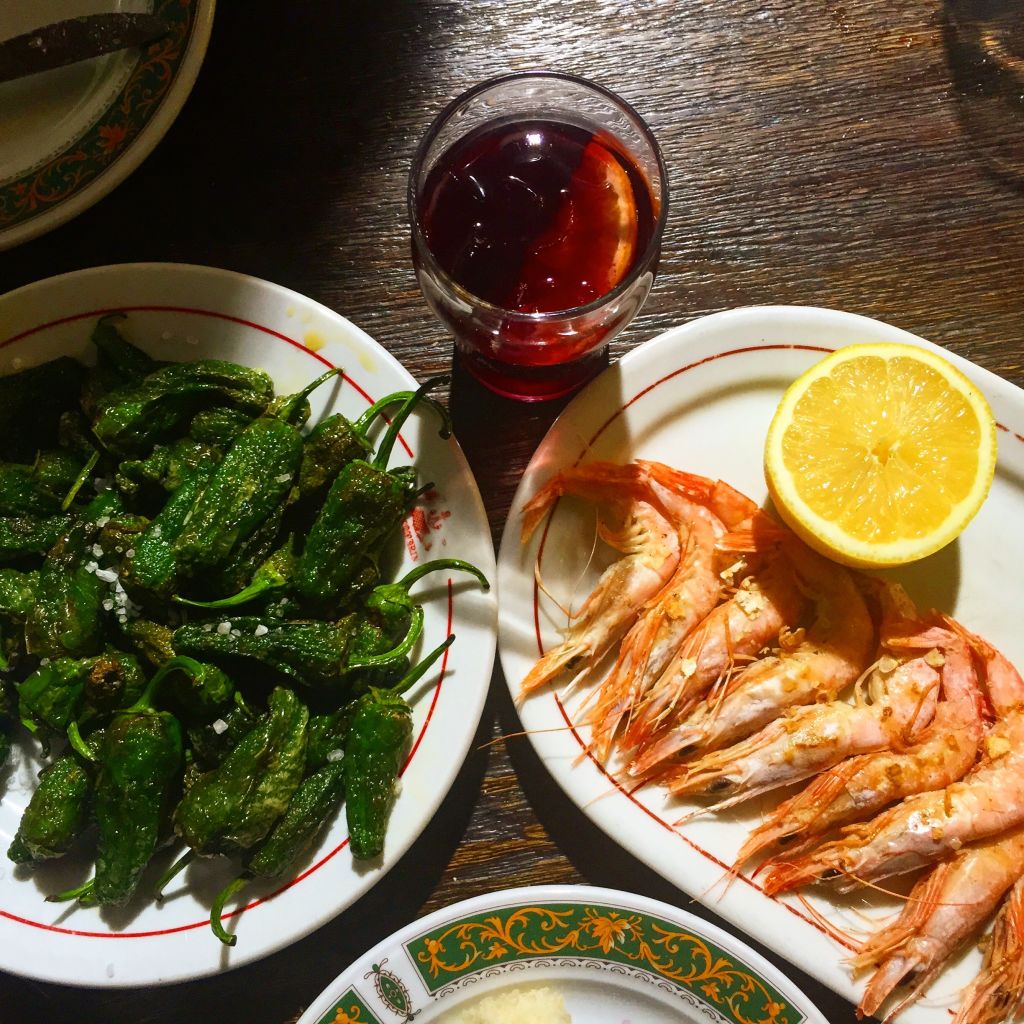
Eating in Madrid
“Don’t eat paella in Madrid,” one Twitter follower implored.
“Let me know if you’re going to Barcelona, because I have a friend who staged there and knows some great places…” another one explained.
Why is everyone so down on Madrid? It could be since most of the world’s culinary attention is affixed to Catalonia, the region housing not only Barcelona, but Rosas (where El Bulli once reigned) as well as the more recent #1 placeholder on The World’s 50 Best list – El Celler de Can Roca, in Girona, about 40 minutes north by train. I just returned from 10 days in Spain – a few days in Madrid, followed by a week in Barcelona – picking up our son from a soccer camp run by Real Madrid, so we figured we’d kick around a bit and try to come up with a few good meals. I’ll deal with Madrid first, where the heat felt like Death Valley on a good day. I found a great deal on Airbnb, right in the center of the city, which allowed easy access for cultural visits to the Thyssen-Bornemisza, Prado and Reina Sofia museums, as well as some obligatory tourist stops like the Royal Palace and Plaza Mayor.

Since our apartment was located pretty much in the heart of Madrid, we made a regular stop each morning at Maestro Churrero, a 113 year-old cafe frequented by locals. I was reminded of my high school Spanish textbook, Churros y Chocolate, and it didn’t require a lot of arm-pulling to get my kids to indulge in one of Spain’s most common breakfasts: lightly fried, crispy and thin churros, paired with warm chocolate the consistency of a champurrado – thick like a chowder. Dip, eat, repeat.
The best market visit occurred mid-week at the Mercado San Miguel. The city’s last remaining public market made of iron, it celebrates its 100th anniversary next year, and for me, it was love at first sight. Stall after stall offered temptations – most of which can be had for a euro ($1.10) – and are typically eaten while standing directly across from the vendor who hands you the goods. Fruity Spanish olives overstuffed with cheese, anchovies or sun-dried tomatoes; silky smooth chilled Andalusian gazpacho; an entire counter dedicated to ham; another one focused exclusively on bacalao (cod), layered over small pieces of toast. Cider, sangria, tinto de verano (red wine over ice), vermouth on tap…I could have spend the better part of the afternoon there.

On our final night in Madrid, we first ran into the Reina Sofia museum to see Picasso’s famous Guernica, then made our way by cab out to the bull ring. My daughter could only take about two matches, and while she appreciated the dancer-like quality of the matador, after she saw them jab the “finishing off” dagger into the second bull’s head, we made our way to Taberna Arzabal, across the street from the Parque del Retiro.

“We don’t open until 8:30 p.m.,” the host reminded us, even though we had a reservation. The very un-cool reso time didn’t matter to us. We had heard their version of tapas was a bit different than the norm, and wanted to get there early, since we had a flamenco show to catch back in the center of town at 10:30 p.m. We started off like most meals in Spain – crispy potato chips, plump, briny olives and some marinated anchovies (now I get why José Andrés sells his own potato chips in the States), and proceeded to order one thing from each section of the menu: a tortilla, some tartar and croquettes, claro que si!
You could tell each dish had been prepared by a chef who was cooking for locals, not the tourist hoards, and believe me, in August, tour groups are everywhere. Not only were the flavors brighter, and more pronounced, there were none of the usual tapas we had seen back in the center of town, like potato salad, crab salad and so-so jamón, draped over marginal/thick cut bread. This is why I encourage you to get on the Metro (easy to navigate) or jump in a cab (less expensive than Chicago) and head out to where the locals go. You don’t need to travel more than 15 minutes, but you’ll be rewarded with some great meals.

That person who warned me about not eating paella in Madrid? They were spot-on. We did try it one place in the hipper-than-thou neighborhood of Malasaña (which I would recommend you walk around to shop, nosh and people watch), but it was a huge disappointment – no crusty bottom layer of crispy rice, or socarrat – and from then on, tended to avoid places that posted large signs or sandwich boards outside, listing all of the paellas on their menu. That would have been a dead giveaway to mediocrity. Tomorrow: eating in Barcelona.
